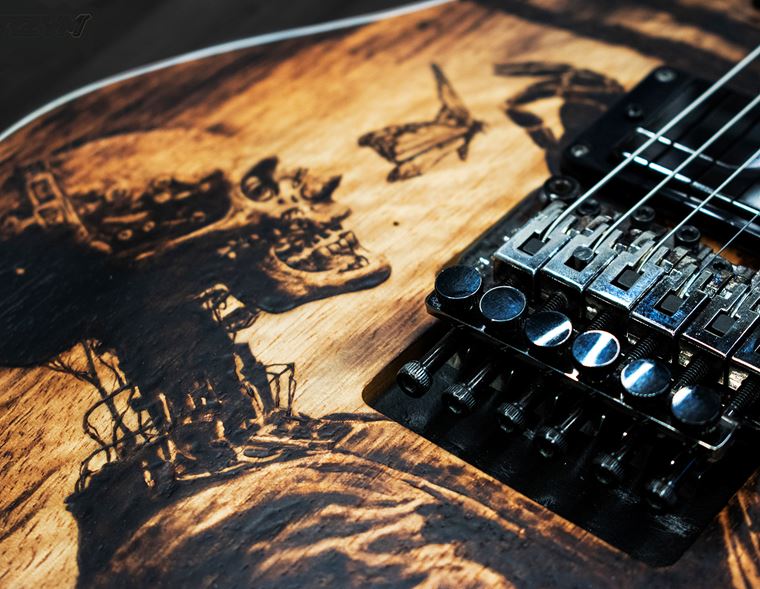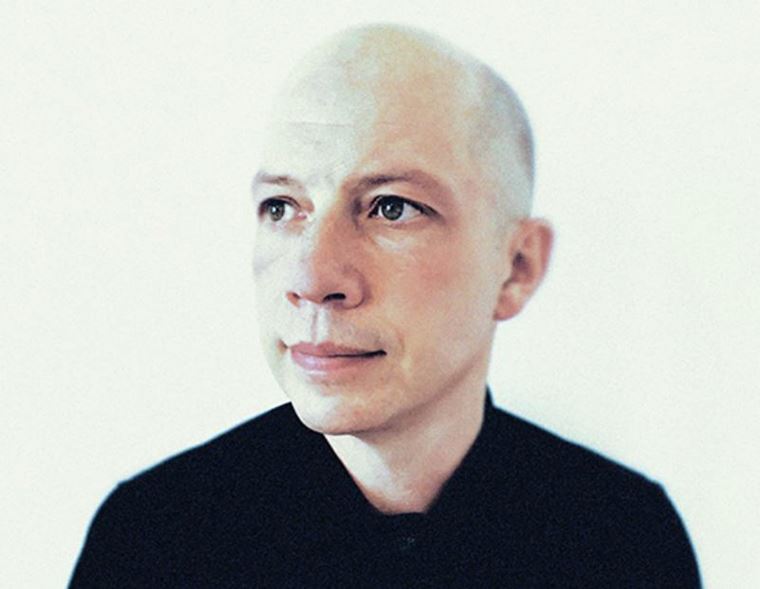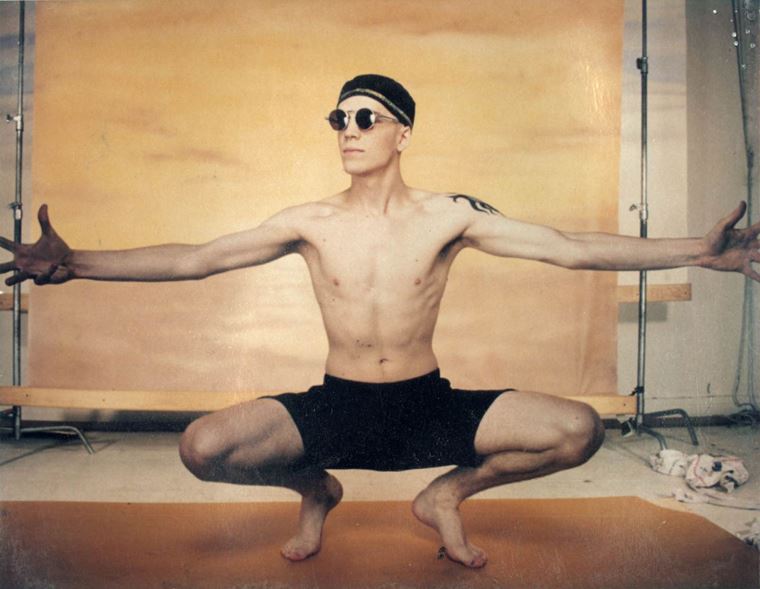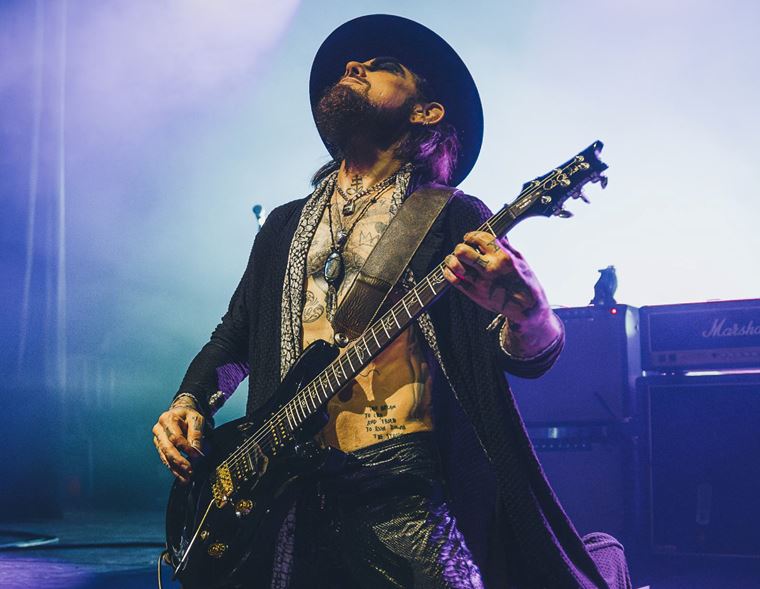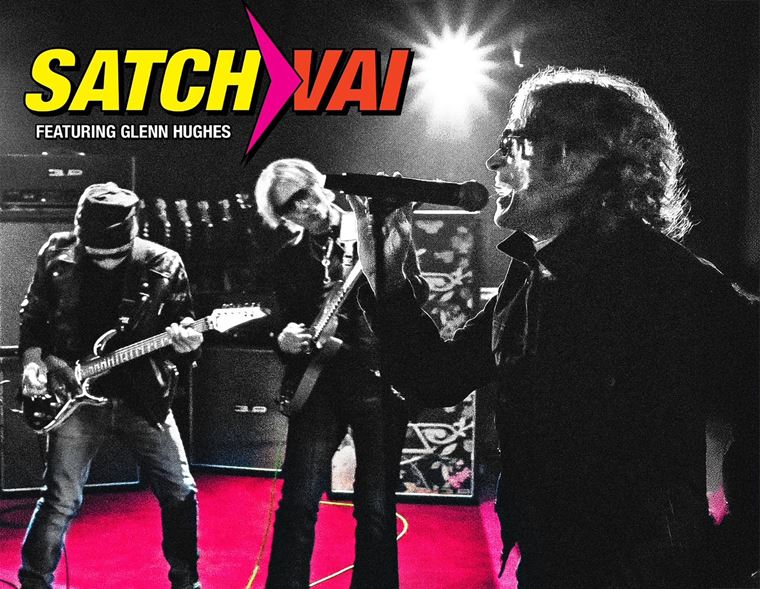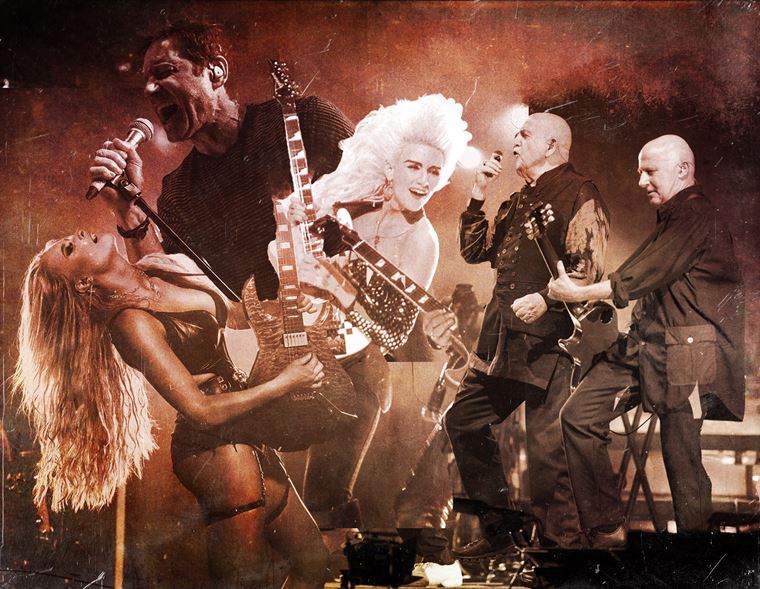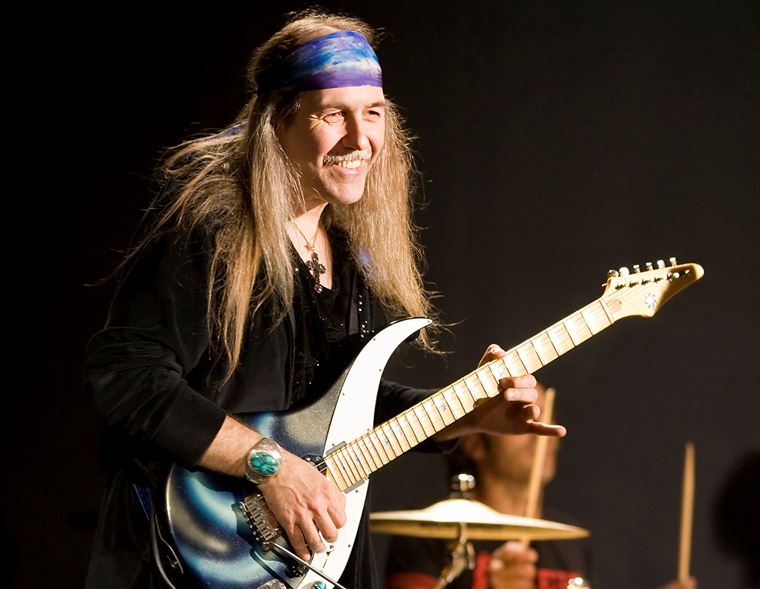The guitarguitar Interview: Dead Can Dance
Dead Can Dance are truly unlike any other band. Their sound, impossible as it is to define, brings together exotic instruments, tribal and ethnic rhythms, huge amounts of atmosphere and two startlingly good vocalist/musicians. These two vocalists - Brendan Perry and Lisa Gerard - are in fact the entire band. Session musicians are ocassionally used, but the ethereal, transcendant sound of Dead Can Dance is the product of these two incredible musicians.
From early 80s Australia to a high-rise in London's Isle of Dogs and on to a converted Church in Ireland, Dead Can Dance brought their inimitable sound to the masses, becoming label 4AD's biggest selling band. Their music paid no heed to trends of the time, instead opting to go back in time, as well as inwardly into themselves, to find the sounds, traditions and atmospheres that they wanted to communicate. The result was mesmerising, and continues to be.
If it's a difficult sound to describe, then it's a harder sound to produce. Truly, their influence is massive and yet no other bands have taken on Dead Can Dance's widescreen sound. Indeed, their music often owes more to a cinematic context than that of a 'Rock band'. This is evident in the regular use of songs like their majestic 'Host of Seraphim' in feature films. Indeed, co-vocalist Lisa Gerard's forays into Hollywood scores (the female vocals throughout Ridley Scott's Gladiator are hers) have won her Academy Award nominations and Golden Globe wins.
Last year saw Dead Can Dance release a mysterious new record, Dionysus, the first since 2012's Anastasis. From the enigmatic cover onwards, this otherworldy record projects an beautifully 'other' sound that is both fresh and demonstrably 'Dead Can Dance-like': the sounds blend bird calls and water sounds with groups of Mediterranean percussion, choral pieces, chants and other surprising elements. It's a sublime listen, with it's seven constituent parts being grouped into two acts. The accumulated power of Dionysus is mesmerising indeed.
Earlier this year, Dead Can Dance embarked on a European tour, not to promote Dionysus, interestingly, but to celebrate their long and labyrinthine career. A resounding success in Europe and the UK, next year sees them cross the Atlantic for a tour throughout the Americas. In the meantime, we chanced upon some serendipitous timing. Having been keen to learn more about this singluar, remarkable band for many years, a chance enquiry found Brendan receptive to an interview!
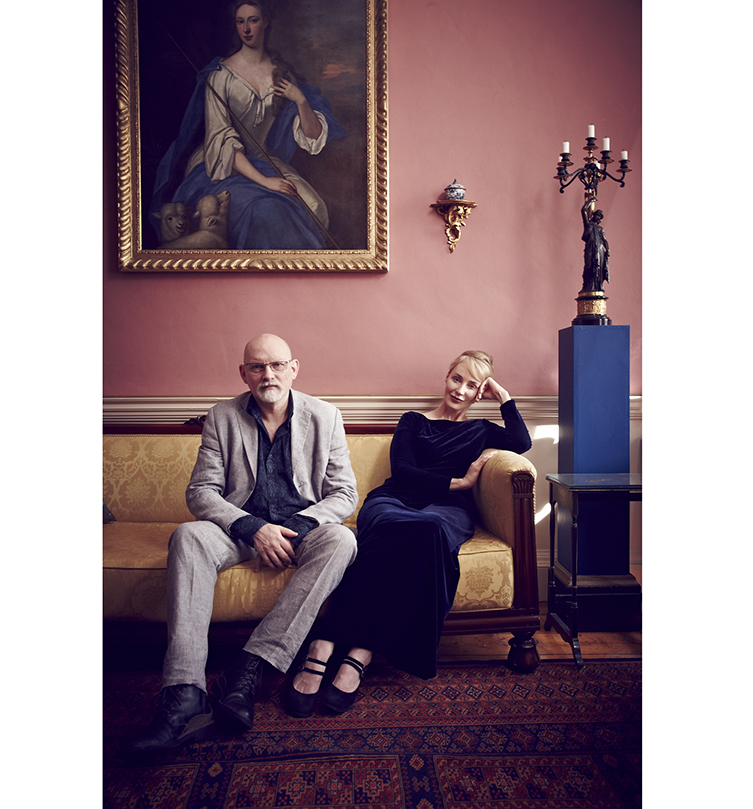
Within two days, we were on the phone to him from his home in France, and found him to be quite wonderful company. He was very generous with his time, and in the end we spoke for over 80 minutes. We cover a large amount of ground here, in what is perhaps the largest interview guitarguitar has conducted yet! From DIY drums made out of metal cans, to Greek Rembetiko music, to blending samples with performances, we spoke about lots! We took in subjects like Jung, Neitszche, drumming oneself into a trance, the disconnection of modern society and more. We got around to talking about his enviable guitar collection and first-class pedalboard, but only after we'd discussed the Sarangi and the Berimbau! It was an enlightening learning experience, to say the least!
The conversation does bear relatively heavily on the Dionysus record, since it is the most recent Dead Can Dance release, but Brendan was happy to talk about the classics, too, including some great stories about songs that some of you will have loved for years! This was a rare opportunity to gain access to a wonderfully talented, highy motivated and individual musician, and we are more than happy to present this conversation to you now.
We pick up the tale from the very beginning...
Guitarguitar: Hello, is that Brendan?
Brendan Perry: Hello Ray.
GG: How’s it going?
BP: Good, mate, good!
GG: Nice one! Thank you so much for agreeing to talk to me!
BP: No problem, sounds great!
GG: So, I’ve got a bunch of questions about Dionysus, about the tour, your solo stuff...so, I guess we’ll see how much we get through, but how’s about we just have a chat about music?
BP: Yeah, that sounds fine.
GG: So, is the European tour all finished now?
BP: Yeah, yeah it was actually finished back in July and I had a little Summer break, and now I’m working on my next solo album, which I hope to finish by the time we hit the road again. Next April we do the Americas, so I’m trying to get my solo album done in between tours.
GG: Fantastic! Well, why don’t we start off talking about that? How far into the process are you just now?
BP: Well, I’m a few months in. I’m working alone, so it’s always a slow process. But, it’s kind of a world-first, this album, in many respects. It’s cover-versions of songs from the Greek Rebetiko tradition. They’re songs from the 1920s right through to about 1950. It’s the first album, that I know of, where these songs will be sung in English, because I want to bring these wonderful songs, basically, to a worldwide English-speaking audience. They’re such beautiful songs. A lot of people know about Rebetiko, or Rembetiko, or Rebetika, there’s different ways of pronouncing it, but very few people really know the lyrical content of what the songs are actually about.
So yeah, that’s my mission at the moment! I’m been learning about a lot of it, I always do a lot of research, and I’ve read a lot and listened to a lot of music from this period, and also acquired the instruments, which is like a family of bouzoukis. There’s like a very small one, there’s a medium one and the large one, which is called a bouzouki. The medium one is called a Tzouras and the small one’s called a Baglama and they’re all tricordos, which is like three sets of double strings, tuned in D-A-D. It’s traditional, kind of like an open (guitar) tuning.
GG: I that a similar idea to a Turkish Saz? I picked one of those up many moons ago.
BP: Saz, yeah, Saz and once again, what a Saz is, or Baglama, it also has a family. They’re more extended: they have a really long-necked one, and then they have a real short-necked one and there’s a few different sizes in between. There’s definitely an etymoty in the cross-reference of instruments that have been informing each other, from mostly the Oriental/Turkish tradition and the Western tradition.That’s primarily what’s actually interesting about Rebetiko music, because it is a fusion between Eastern and Western musics and I’ve always been really fascinated by it. Like Oriental music.
GG: Yeah, in a lot of ways, without trying to reduce it too much, that’s what quite a lot of Dead Can Dance is like: a synthesis of traditions of maybe Eastern/Oriental music, with a Mediterranean influence. And obviously there’s the mythology and stuff, so it makes sense that Rebetiko would be right up your street of interest.
BP: Yeah, totally! And also, I suppose it’s kind of topical in a way because this music came out of a forced migration of 1.5 million people who were exiled from Turkey and landed in Greece. The subculture that grew up around the ghettos that resulted from that is the music of immigrants and also of Greek people who found themselves on the periphery of society. The outsiders, as it were. It’s really poignant and today, with the amount of immigration and enforced migration from Syria and the Levant, you know, from those regions, it’s still very relevant.
The synthesis between East and West has always fascinated me, because it’s not that well documented, and 19th century, 20th century Nationalism has often been discounted within the education. It’s always ‘it’s East and West’, ‘Black and White’ but what’s interesting is the universality of spirit and cultural bridges that actually have occurred, going back from time immemorial, really.
GG: Yeah, the similarities seem to be prevalent if you go to things like, even in an anthropological way, with even mythologies and so on, it seems to be that the same stories keep repeating themselves with different deities and different heroes. That then works its way into Folk culture, folk music and such, doesn’t it?
BP: Yeah, absolutely, yeah. The archetypes, as Jung would call them, are inescapable: they’re part of the human story, on a universal level. I think, primarily, that’s what Dead Can Dance is really about, when it comes down to it: looking for what we have in common, rather than what separates us, you know? It’s looking for the universal mechanisms, whether they be cultural, philosophical, what have you, that we all have in common. And that’s what Dionysus certainly attempts to explore: the universal spirit of Dionysus in various word cultures.
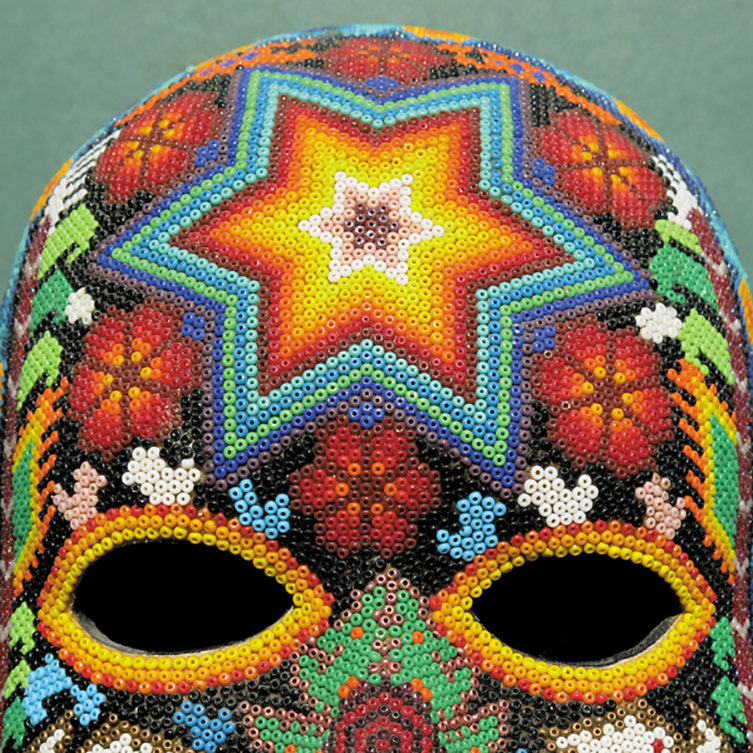
GG: Yeah, Dionysus is otherwise known, in certain terms, as Bacchus, as there is an equivalent in, say, Latin America and in the East. It seems to be the kind of...now, you’ll be able to school me on this one as I’m still learning, but even just from reading Manly P Hall’s work, that notion of the idea that you have one hemisphere of, like, thought and order, and in the other, it’s kind of like reckless abandon. Dionysus seems to embody that side of it, is that the idea?
BP: Yeah, yeah. The philosophical, psychological side of it was very much taken on by Nietzsche. He explains it really well in The Birth of Tragedy. We tend to have two kind of like conflicting opposites: you have this kind of order, the Apollonian, that Man tries to impose on Nature, let’s say, to make order of it, you know?
GG: Mm-hmm.
BP: To create cities and urban landscapes, using technology and things to create a sense of order. But the Dionysian aspect, that runs counter to it, is very much sort of linked with the wildness of nature, the mysteries of nature and the universe and how they’re uncontrollable and wild. They are often represented as destructive elements to man, in opposition to the Apollonian.
But it’s interesting, you know, that Nietzsche said that if you can combine both of them together, you make the most sublime form of art, or culture. And that’s really interesting: that you have order, and within that order, you have this sense of chaos, this uncontrollable Nature that happens within it, this Dionysian spark, you know? I suppose it’s about mankind trying to find this ecological balancing act: of being part of nature, and not being too Apollonian, too separated from Nature, because we are animals, essentially, and we can’t exist in a bubble outside of Nature. So, yeah!
GG: Yeah, that notion of the Apollonian versus the Dionysian: is it stretching it to say that, on a record like Dionysus, there’s a lot of elements that are almost like field recordings of nature, bird calls and so on... would you maybe be inclined to say that their relative texture and atonality on the record is more representative of the Dionysian, whereas the structure of a metre, and of notes and scales arranged to make music, make more of an Apollonian approach?
BP: Yeah! Yeah, you could say that. Everything can be represented in many respects, I mean, when we talk about music, the way we understand it is through a sense of, I suppose, mathematical equation and physics. But there’s a side, there’s a kind of ‘dark art’ too, you know? It’s all to with tonality and timbre and things that can’t be replicated mathematically, let’s say, in the digital realm. The analogue aspect of them, the difference between...I don’t know, it’s hard to find an example at the moment...something within something like the sound of a drum, for instance.
It’s interesting to note that a lot of the best sounding instruments are not made from artificial, plastic, petrochemical products! They actually sound better if they are things that were once living, that have now become dormant, or dead, such as animal skins. They just sound much better than plastic heads on drums, you know? Also, whether they use bone for bridges or Ebony in fretboards: they just sound better! They are natural things that are now in a dormant stage that were once living. That, I suppose, is a side which gives an indication of the natural, elemental aspects of things, you know. I think I’m deviating a bit from the original question! (laughs)
GG: Not at all! I mean, it dovetails back round again of course because even with something as straightforward as a guitar, we’ve realised that things like the original Parker Fly guitars, that were made out of graphite and suchlike, they just didn’t do it for musicians. Even if we couldn’t define the problem – we couldn’t say this sounds ‘cold’, ‘clinical’ or whatever because that’s all subjective: maybe you want your guitar to sound cold, clinical or whatever – but for whatever reason, we want wood. And we want sustain. And, you know, people like the finishes to be thin so the guitar can ‘breathe’ more, and even having a phrase like that...we’re talking about an inanimate object ‘breathing’! That means we’re letting in that sort of elemental kind of unknowable, unquantifiable super-nature into it, you know?
BP: You reminded me of the point I was trying to make now! You can replicate a musical instrument if you use artificial products more faithfully, I mean you can factory-make them so you can create thousands of them and they all, more or less, sound the same. But with natural instruments, as soon as you use natural things like wood or what have you, it’s very hard to make two things the same and not different, you know, different products.
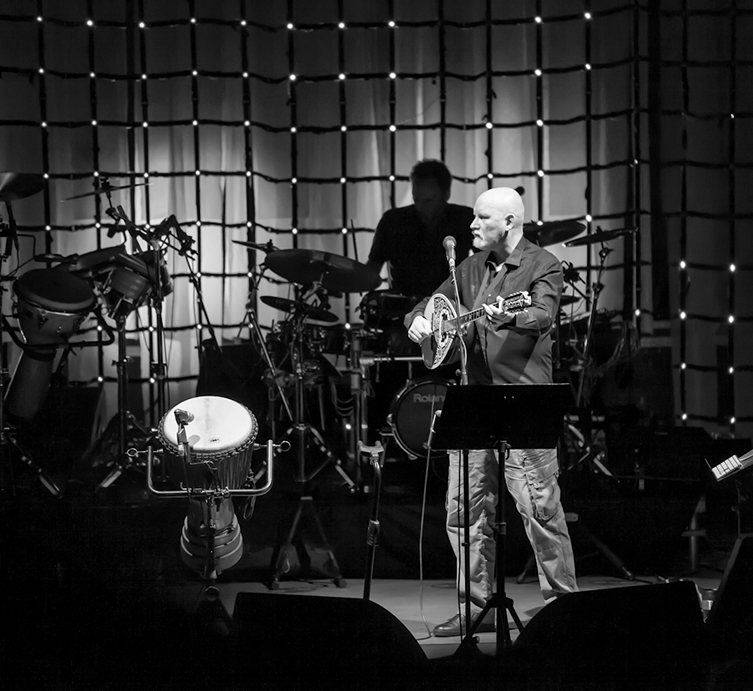
GG: Exactly, and talking about that type of thing, going back to the Bouzoukis, when you are onstage with Dead Can Dance, and you’re not playing guitar, is that a Bouzouki you’re playing?
BP: Mmm, yes, it is. It’s electrified, it has a pickup added, a passive one, and I play it through a Fender Acoustic Pro amp.
GG: Oh yeah, I know the ones.
BP: They’re fantastic.
GG: And what kind of tuning are you keeping the bouzouki in?
BP: Em, the bouzouki is in...C-F-A-D, like on the low string. Yeah, that’s the traditional bouzouki tuning.
GG: Ah, and do you write with that? Or is it one of those situations where you go to it when you just want that particular sound?
BP: I usually use it for lead work. Some chordal work, but it’s like two-part harmonies at most. It’s interesting, because the four-course Bouzouki, the modern bouzouki, has only been around since the 60s. It was developed by this Greek guy called Manolis Chiotis, an amazing bouzouki player. The original 3 course instrument, which is in D-A-D, Chiotis found too limiting, because he wanted to play more Westernized style, playing chords in between the lead passages. So yeah, he added a fourth string, basically, and developed the modern Bouzouki as late the 60s!
GG: I didn’t realise that! And that’s the type you tend to prefer?
BP: That’s what I use live because it has a greater compass: I can go lower and I can go higher. The 3 course one I’m using on the Rebetiko album, that’s a traditional one they use, and it’s great: you have that D drone happening with the open D-A-D tuning, and so you you can play the drones at the same time as you play the leads through it. It’s more of a linear style of melodic playing, up and down on the neck, whereas the 4-string bouzouki, they play in a caged box system, though they move around the neck more.
GG; Yeah, kind of like what you’d do with a guitar?
BP: Yeah, exactly.
GG: Would you say that that’s actually...this is one of the many reasons I really wanted to chat with you about music...my understanding of Eastern music vs Western music is, I’ve noticed that lots of Eastern music tends to be a linear melody with the drones: you don’t often get chord changes happening. I noticed that Dead Can Dance do that a lot as well, whereas Western music seems to be able chord changes, blocks of song like verse, chorus etc and then harmonic changes rather than melodic changes. Is that something you would agree with?
BP: Oh absolutely, yeah! I mean, the Western tradition broke away from the Eastern tradition and got heavily into harmony, whereas the Oriental, the Eastern tradition is very much concerned with ‘monody’. It’s a monophonic tradition that’s more interested in melody than group harmonisation. Yeah, they developed it further. To give them a greater sort of compass, their scale is far bigger: they use a lot of quarter tones.
GG: Yeah.
BP: So, between the octaves, you have all of these quarter tones, so they’re really into the nuance of the monody, the monophonic melody, you know.
GG: Is that something to do with...because maybe they listen to much more of that kind of melody, without the chord changes, do you think their ears have developed to kind of recognise things like microtones and quarter tones in a way that we (Western musicians) haven’t? And are kind of like ‘uhhh, shift it up to the next tone!’
BP: Haha, oh yeah, yeah, yes! Well, that’s interesting because the quarter tones, they kind of...they (Eastern musicians) don’t rest on them for too long. They have this system, which still respects that there’s four notes in each part of the scale: the low and the high. But they’re really passing notes, when you get into the quarter notes: you don’t stay on them too long, because obviously, ‘Ooh!’, it pushes really heavy on the scale! It gives a shift to things, which is not pleasant, I suppose, for want of a better word, to listen to. So, when they do use the quarter tones, they’re really just for nuances, like for trills or passing notes, grace notes. That’s what gives it the flavour, that Oriental flavour. Without those quarter tones, it really doesn’t sound Oriental. And what’s nice about them, it’s a little bit bittersweet: you can have a really sweet melody, but you hit a couple of these, and it brings in a kind of melancholy, a slight little bitterness to the equation, which is beautiful. It gives it more depth than an 8 note scale would give you.
GG: That actually answers one of the questions I was really wanting to ask: with a lot of your music, and we could take loads of examples but maybe something like ‘Rakim’, or ‘The Lotus Eaters’ or something like that, there’s a really specific, Eastern, exotic sound, but it’s never cheesy of like ‘holiday advert music’, if you get me! I wonder if that might be to do with your knowledge of quarter tones and so on? Those things might make all the difference?
BP: Yeah, you know, a lot of folk traditions, which is obviously the roots of the cultural influences we draw from, they go through different stages. Going back to Greek music, it really went...as soon as the bouzouki went electrified, it became real pop/rock, and went through a really cheesy phase in the late 60 and 70s especially! They’re the kind of areas, depending on what kind of folk music you listen to, they all invariably become popularised and to a degree Westernised, too, and that’s when they hit Cheeseville, usually! (laughs) It’s those eras, and those forms, that I avoid. I try to stay faithful to the spirit of the original folk tradition.
GG: Yeah, I understand.
BP: But I also add my own voice to it, and my contemporary take on the arrangements, too. But yeah, definitely avoiding popularism. (laughs)
GG: One of the first tunes that really captivated me with Dead Can Dance was the demo of Frontier that was included as the 1st track on the Wake Best Of collection. That was my first DCD album. Even back then in your early days, the rhythmic ideas are so far away from your typical kind of guitar, bass and drums thing. I wondered, is that also part of your ethno-cultural research? To check out and learn specific types of rhythms?
BP: Um, yeah, yeah! Frontier was kinda strange...(laughs)! We were living in Melbourne at the time and I was listening to a lot of music from Lebanon and Egypt, belly dance-type music, because we were working in a Lebanese restaurant. We were working in the kitchen. So, we were listening to that all the time on the music system, and I used to take the cassettes home with me and those rhythms really kind of infused into my own work and inform my own work. Also, I was really into Joy Division at that time too. I loved (Stephen) Morris’s kind of tribal style of drumming.

GG: Yeah!
BP: And so, it’s a combination of those two things, really, looking back at it. And also, to Can, I was a big fan of Jaki Liebezeit the drummer, I loved his drumming.
That particular track, Frontier... we ended up at a friend’s place who’d invited Lisa (Gerard, DCD co-writer and co-vocalist) up to do a song for her, and she asked me along because we were living together at that time. She said ‘You wanna play on this?’ I said ‘Okay, well what are we doing?’ ‘Ah, we’ll just make it up!’
GG: Hahaha!
BP: ‘Ok!’ Haha! So, we were just there one afternoon, and I thought: ‘Well, what if I laid down some percussion? And there were no drums there, so I was like ‘Shit, there’s nothing to play!’ We found three kerosene cans through the back yard, and there were no drumsticks, but we found a pair of old, um, broken chair legs (laughs)!
GG: No way!
BP: And I kind of like beat the drums like West Indian steel drums, and I knew that if you pushed down on them you could change the pitches of the drums. So, I got three kind of pitches, they were kind of atonal, they sounded okay, and that was it! I put it down in a couple of takes, just playing the drums, and we built that track from there! Basslines, voices...I did the bassline with my voice.
GG: Seriously? That whole rhythm thing is just you whacking a bunch of metal cans?
BP: Yeah! Three kerosene cans! (laughs)
GG: Shit! It sounds so other-worldy as well! What a success! And I take it that whole thing’s a performance? It’s not fed into a sequencer or anything?
BP: No, I got the rhythm up and thought ‘Oh, this is working, this is nice!’ You know, run the track and I think I played the piece for 4 minutes, not knowing where this was going.
GG: You’re blowing my mind.
BP: And then we had a Roland Space Echo, and I sang through that, with just a low voice, because we had no bass guitar. We had nothing! The only melodic instrument we had was Lisa’s Yangqin, the Chinese dulcimer, and that was completely out of tune! She didn’t even know how to tune it!
GG: Haha! So, even those vocal noises, they’re not being played on a synth, after being fed into a keyboard? That’s just you singing into a mic with the Space Echo?
BP: That’s it! That Gregorian kind of style, yes, it is. With the Space Echo.
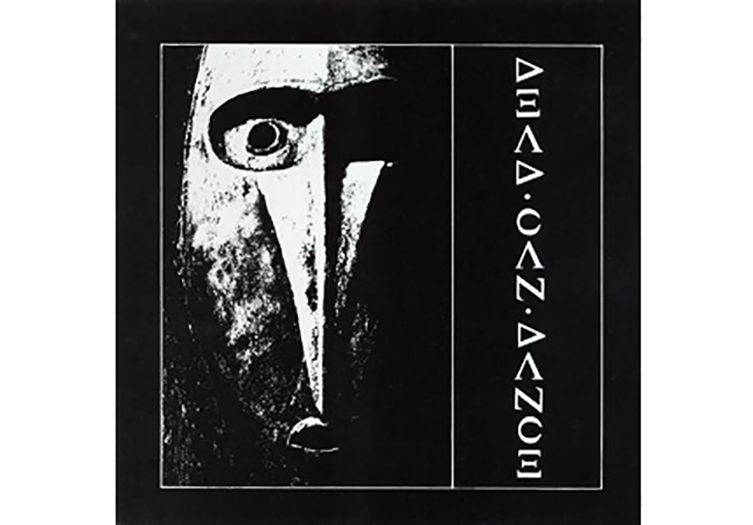
GG: You just made my day! That’s so good! (Brendan laughs) It’s such a sound! It’s such a sound! That a whole concept of sound born out of necessity, in somebody’s house! What about something like Host of Seraphim (incredible, huge-sounding epic DCD song: Ray)? That piece of music: how do you even begin to write that? That’s not a case of strumming chords on an acoustic guitar, surely?
BP: No, I mean we were going through a kind of neo-classical, baroque phase around that time. We listened to a lot of classical music. I think we started working on the front end together with the organ basically, providing all the pedal bass and just a minimum of harmony for Lisa. Then, um, yeah, we just kind of developed it for the strings. A lot of it was done with an Ensoniq Mirage, I was using that: one of the first affordable sampler keyboards, and then it was scored for, I think it was six string players. I think, eventually. We used six because we couldn’t afford a full orchestra, so we did the old ‘Oh, can you do, yeah, dub this part over?’ So, we kinda built it up to sound like a big section, like I suppose a small chamber orchestra.
GG: Wow! Well, it certainly worked! And there’s a lot of beautiful reverb and such to give things a kind of cathedral-esque quality as well, right?
BP: Yeah, yeah. But we had a lot of problems with that, actually. I remember when we came to cut it (the final Master). I think, because we did so many overdubs, using those six players, and the bass was a particular problem because there was a really low sub pedal bass, that we couldn’t cut it! I think we had three attempts to cut the vinyl at that time. Umm, this is pre-CD, isn’t it?
GG: Emm, I think Serpent’s Egg (the album that contains Host of Seraphim) was 1987, wasn’t it? ’88?
BP: Bit earlier, I think...eighty...oh, hang on, yeah it would’ve been (checking something) ’87, yeah. 88! And yeah, we had to cut it three times because the needle wouldn’t stay in the groove! (laughs) It kept bouncing out! I think the bass was actually moving from left to right so violently...now you’d say it was kind of out of phase.
GG: So the actual frequency was stopping the vinyl from being cut?
BP: Well, you could cut it, but the needle wouldn’t stay in the grooves! The bass was moving almost sideways between the stereo walls, from one wall to the other.
GG: Wow.
BP: So, the needle couldn’t track, basically, and kept popping out! Hahaha!
GG: That is quite an achievement! That’s worth talking about, hahaha!
BP: It doesn’t sound as good as the...the vinyl version isn’t as good as the digital version.
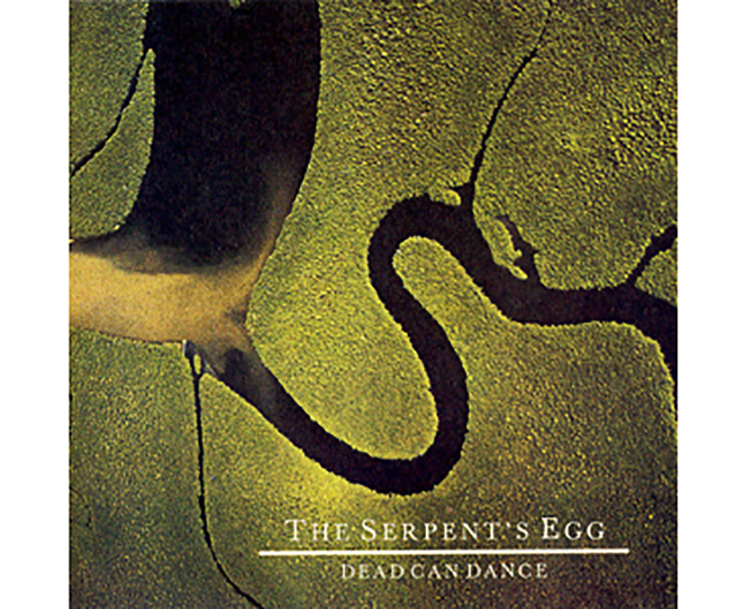
GG: Ahh!
BP: Yeah, because of that. We had to work on the phasing of the bass, so it doesn’t have the same warmth and bottom end.
GG: And on that track, your vocal performance: I know that Lisa quite often sings her own language that’s kind of an emotive, made-up language, but is your part an actual language?
BP: No, that’s all just using the voice as a musical instrument, really. Using a kind of syllabic, impressionistic, kind of form of musical expression.
GG: It kind of leaves the meaning more open to interpretation, right?
BP: Yeah, yeah. It’s a sublimated use: it kind of implies that there’s a language but there isn’t really. It’s one of emotion, really.
GG: Yeah exactly: it frees it from having some sort of didactic or specific sort of reading.
BP: Mm-hm. Yeah, yeah.
GG: Brilliant! So, keeping that in mind for the likes of Dionysus, in the beginning of the first part (Dionysus is 7 pieces of music arranged into two Acts), ‘Sea Borne’, I don’t know if you would agree but I think it’s quite ominous sounding. It becomes joyful by the second part, ‘Liberator of Minds’, there’s lots of joy and it’s such a colourful record, but the beginning, it’s almost threatening sounding. I wondered, when I listened to it, as I understand it’s meant to be heard as a continuous experience, if it’s meant to touch on the idea of an initiate? Like a Dionysian cult? Like the parts represent being taken through the paths of initiation to get to the Mystery Schools, is that part of it?
BP: Um, yeah, the idea really is there was this new god on the block, in a way. There’s this new arrival to the pantheon of the psyche, the Greek psyche. Well, to look at it this way, the gods are really kind of extensions of the human psyche anyway, they kind of cater for different aspects of Greek life, so they are projections.
GG: Sure.
BP: Mythological projections, and they all have their different traits that kind of reference, and are exemplified, by human traits. There’s one element missing, that was added to, over the years, from ancient times: they’d add a new god, or another new dimension, and it became this really complicated mosaic. Dionysus was kinda like...he was a latecomer to this, so this was the one aspect that was really missing from the Greek psyche. It was the exotic, the mysterious, Nature, and so the legends say that Dionysus came from the East. So, the arrival, the first track, is really about this new revolutionary energy that was arriving, because he probably arrived by ship across the sea.
GG: Ahhh, got you! Sea Borne! I interpreted that as being people, like initiates, crossing waters to get to sort of like a special piece of land where the ritual was taking place, but it’s actually about Dionysus himself arriving in Greece.
BP: Exactly, yeah. His arrival, yeah.
GG: I understand! I love that! You wouldn’t believe the images I get from listening to that record. Now earlier, you were talking about feel. I’m assuming that a lot of Dead Can Dance’s music takes advantage of sequencers for taking care of some rhythm parts etc, but when I saw Dead Can Dance live last May in London, it seems that there were no backing tracks? Would I be right in saying that everyone was performing?
BP: Yeah. We don’t use backing tracks at all. That’s why we have we have two keyboard players and a third keyboard sometimes in the equation. We split up a lot of the parts that we can’t play live, between the group. The keyboard players are very good, and they can each play up to about three different sounds, you know, each, so that’s, uh, very busy! (laughs) There’s not much movement from them, apart from their hands! Hands are going like wildfire!
GG: Haha! So is that all MIDI channels, where the one keyboard player may have a combination of, say, a string part, a rhythm part and another instrument, all mapped out across the keyboard?
BP: Oh yeah, absolutely! I use (Apple software) Mainstage. We have a dedicated iMac that has Mainstage and we use the Universal Audio interface and so the sound quality’s really good. Mainstage is fantastic live, and we have a guy on the side of the stage with the exact same Mainstage computer, ready to shift over to the backup one at the drop of a hat if anything goes wrong.
So yeah, it’s quite a complicated setup but it’s made really, really simple by the fact we’re using Mainstage to connect everything together. It’s really quick if you want to try out new sounds and then just put them on a section of the keyboard, so for any keyboard player, it’s just drag and drop. Yeah, it’s great.
GG: That’s brilliant. Especially when your music is...well, it’s not exactly ZZ Top, where its just guitar, bass and drums! It’s a very complex sound and not only that, the sounds are very specific. I’m sure you have a little bit of come and go with certain timbres and textures, but on songs like, from the top of my head, Anywhere Out of the World, those big synth string noises are quite specific. You opened with that in London and I thought: that song kinda has to have that sound!
BP: Yeah! Yeah, it’s great revisiting that stuff because, essentially, it’s like I’m going back to the original album and listening to it and trying to be faithful to it. And obviously, technology has advanced so much since those early albums, it’s like it can be augmented to a degree.
But it’s great, I went back to these early albums and I actually had to relearn them! (laughs) Nothing was written down: I don’t have any original scores or anything so I had to...the great thing is, going back to the sequential thing, what a lot of people don’t realise is that from Spleen and Ideal (Dead Can Dance’s second album) onwards, I used sequencers all the way through. There’s nothing random about a lot of the tracks: they have an exact bpm, and they’re locked in-sync, and so going back to them was kind of easy. I’d just get up my Logic Pro sequencer, find the bpm, just lock in perfectly and then go through all the parts again. Then I could give all the parts to the keyboard players, with all the sounds that were required for them to play. That was fun!
GG: Yeah!
BP: And also improving on the sound quality from the originals too.
GG: So, for something like Anywhere Out of the World, since we mentioned that, would you just lift that actual synth string sound from the original recording and resample it?
BP: No, I’d go to what I’d consider to be the best sample libraries I have at my disposal. Yeah, I’ve got a huge...HUGE library now of various plugins and sample libraries now, which is great: spoiled for choice! In actual fact, it’s too much, I think!
GG: It always it, isn’t it? As soon as you buy a piece of software, they give you 3000 patches when are you really need is, like, 9 of them.
BP: Yeah, I know, but it’s like, I’m so OC about them, that I have to go through every single one to find the one that’s just right! Because, invariably, they’re all different, and they all have little bits of expression and things, you know, that every library has. It’s just, I try to exhaust all possibilities, and its very time consuming and very over-the-top. I’m quite nerdy when it comes to that! I can be lost for hours, if not days, hunting for the right sound!
GG: Well, you need that dedication to get the records to sound the way they do, right?
BP: I suppose so, yeah!
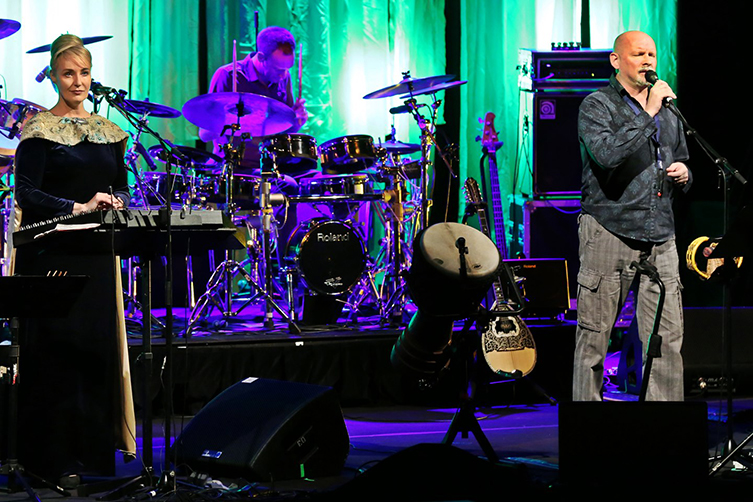
GG: Hope so, right? Haha! (Brendan laughs) So when you’re looking through sample libraries and so on, are we talking things like Universal Audio, Native Instruments...are there any particular go-to pieces of software instruments that you really couldn’t live without?
BP: Well, the actual sample players, like (Native Instruments) Kontakt, it’s really good, it probably has the most libraries of any software plugins to choose from. It loads them into it as a player. And it also gives you incredible detail and control if you wanna manipulate samples. But yeah, generally, the DAWs that we have now are very good: they come with their own engines and things.
I tell you what’s interesting, that was really, really important in the making of Dionysus: the vocal libraries that I’ve been using.
GG: Yeah, so the more kinda of choral sounds?
BP: Yeah, yeah! A lot of them have got what they call syllable builders, engines. They’ve taken the singers, and they’ve sampled them, but got them to sing syllables. You can have a group or solo singing and have like ‘re-me-ta-pa’, what have you. There’s a whole range of these syllables within the engine, it’s like a menu. You can take them and make a word, like ‘may-ra-ta-ma’ out of 4 syllables, and then you put them into your keyboard. But you can play them polyphonically, and they sing polyphonic chords.
GG: Oh, yes, I see!
BP: Yeah, and you can change the lengths of them, so could make the first syllable extra-long, so you could have ‘meeeeeh-ta-la-ba’ and as soon as you play your key, it would play them all in sync, you know? And it’s great for doing choral blocks. Not so much for soloing, but for choral groups, for pads and backing, when you’ve got this movement of chants and things. It was great working with them, because they sound so realistic.
GG: That’s the whole goal: if you can’t even tell! That’s how it often is with Dead Can Dance anyway: you can’t really tell a performance from a sequence or a sample a lot of the time, particularly with the rhythms.
BP: And then once again, you mix them with real voices, that also blurs the edges too, and gives it more movement and character and life, too. Used in combination, it works really well.
GG: You just touched on something there that I read in another interview. I wondered if I could delve a little deeper. You mentioned about ‘energising’ samples by feeding them through certain processes to get more ‘life’ out of the sampled audio. Are we talking about the equivalent of sonic maximisers and that type of thing?
BP: Yeah, well, I really love the audio exciters: I use them a lot depending on the instrument. If you’ve got something that’s got a lot of colour, and timbre in it, I use the SPL Vitalizers, I really like them. You can make the stereo width much greater; you can really bring out the harmonics and really lift them out of the track. It makes them sound more like they’re in the room, rather than in the speaker.
GG: Ahhhh right, now that’s interesting because the whole thing about Dead Can Dance’s music is the space. That was what I really wanted to ask you about. I considered it to be a kind of EQ/reverb thing, but it might be that, mightn’t it?
BP: It’s that, yeah, plus I really love stereo width. I use full stereo width. Plus, placing things off-centre. Our music isn’t really designed to be played on radio, you know?
GG: Mm-hmm.
BP: Or in the car. So, I’m not gonna make concessions for that, I’m not gonna compromise the high fidelity. It’s about taking it as far as you can. What I love about old 60s recordings is, as soon as stereo came in, you could hear all the producers going wild! Like, Wow! Put it to the right! (laughs) You could have the drums all on one side!
GG: Oh, totally! That’s like on old Doors records! You’ve got Jim in the middle but all of the drums coming out the hard right! It’s agony on headphones!
BP: But, people back then had much bigger Hi Fi systems with bigger speakers so it really sounded more realistic, like there was a drummer in the corner.
GG: Haha, yeah, right enough! Right enough. So, the stereo spectrum is an important part. Do you pan things, like, 100 left or 100 right?
BP: No, if I’m using, like, Doppler effects, if the sound is travelling left to right, for instance, or right to left, then that’s the only time I’ll ever start far right or left, but it’s going to move across the stereo field, obviously. But that’s the only time, really. Because you can go onto another system, like a friend’s system and you think, ‘Bloody hell, where’s that instrument gone?’ (laughs)
GG: Totally! It just vanishes!
BP: You get some systems that are really centre-orientated, and the extreme lefts and rights aren’t represented properly.
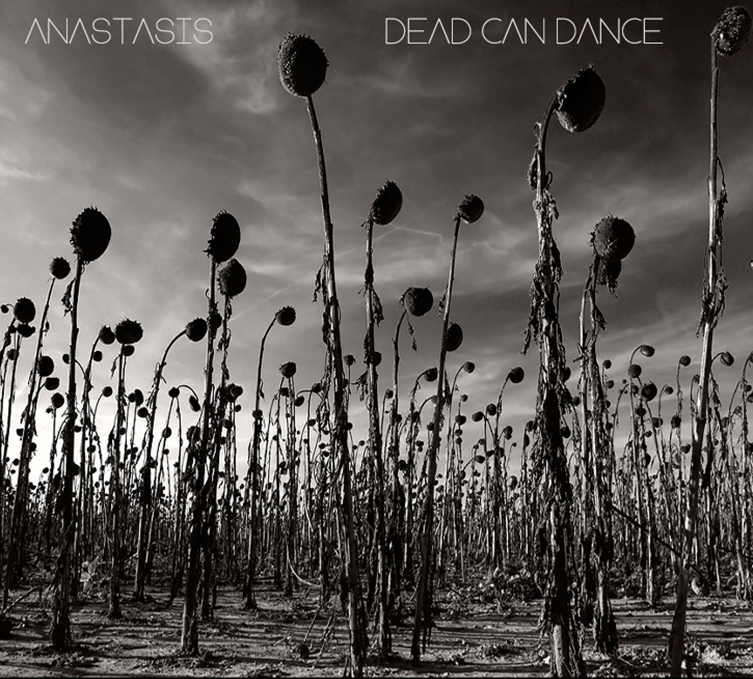
GG: Exactly. Talking about sounds, I was going back a couple of weeks ago into your solo Eye of the Hunter record, and on the song Voyage of Bran, there’s a sound on it. This sound has popped up on Dead Can Dance tunes since, like Agape from Anastasis. It’s an amazing, exotic, ethnic sound, and I’m going to try to make the sound over the phone to you now.
(I make a most ungraceful squalking noise over the phone to Brendan. If it sounded bad when I did it, it sounds worse now as I listen back to it! In full credit to Brendan’s frankly amazing ear, he sussed the sound immediately!)
BP: That’s the one!
GG: What is that?
BP: That’s a sarangi.
GG: Brrrilliant! So, what’s a Sarangi? Haha!
BP: It’s from the Indian subcontinent. It’s like...it’s bowed, and it’s played on the lap, you play it in front of you. It’s got, I can’t remember how many strings it’s got (laughs), maybe three? Ummm, but then it’s got lots of sympathetic strings that sit behind it. You can tune them so they vibrate in sympathy.
GG: Got you!
BP: But yeah, it’s beautiful, because you can really bend the string: you can really make that instrument talk, you know?
GG: Yeah! Is that where you’d put pressure on the actual string to change the pitch and then bow it like a bowed saw or something?
BP: Yep!
GG: Amazing! Was that what was on stage on this tour? One of your musicians was playing something similar, like a really tall thing...
BP: Ah, that’s a Berimbau. They’re originally from Africa but they’re really common in Brazil. Thy use them a lot in Capoeira. They’re amazing, they are one of the most ancient instruments on the planet, the berimbau. The resonating chamber’s like a big sea pod and that rests against your belly. One end is cut out and that’s connected to the barrel. You can actually get a wah-wah kind of effect by moving it off your belly! Plus, you hit the string with a stick, but the hitting hand with the stick also has a little shaker: you hold on to that caxixi and you then have a little shaker action. Then they use a stone pebble traditionally then they press against the string inside, which changes the pitch and produces like a percussive quality as well! So, you’ve got four things going on!
GG: That’s amazing!
BP: So, on the surface it looks really basic, it’s just a bow and a string and someone’s hitting it with a stick! But in fact, it’s really complex.
GG: So, I take it when you have something like that, you build that song around it, rather than trying to fit it into a song?
BP: Generally, I tend to build tracks from the bottom up. So, either bass comes first, or drums come first, but rhythm, generally. In that case (Agape), I think it was drums first, and then berimbau. In a very rhythmical way, anyway, so it’s part of the rhythm, as it were.
GG: That was one of the things I was going to ask: about how, typically, it works for the songwriting. On songs like American Dreaming and so on, I imagine you do sit down and come up with chord progressions and so on, but that won’t work on those Dionysus songs, right?
BP: No, I wanted to sort of do something that was...actually, the big part of the creational foundation for that record was really... the key part for that was choosing the instruments I was going to use. I tend to think of that, when I do an album. I suppose it’s like a painter, you’ll probably understand this (we spoke previously about my ‘other’ life as a painter): you choose the medium you’re gonna use, what paints...
GG: Even the available palette: you want to limit the colours you focus on, otherwise you’ll never get anything done!
BP: Yeah, exactly. So, I was really keen on choosing instruments that would be closely connected with those traditions, where Dionysian ceremonies are still being enacted throughout the world. They tend to be folk traditions, so there were animal skin drums, there were pipes and things made from bones...
GG: Wow...
BP: Wood, trees and things that are very organic in nature, and not electrical.
GG: There was one (ceremony) that I read about you visiting with your brother, the Rampida de la Hora? Was that one of those events?
BP: What was that again?
GG: It was something in Spain where you played drums with your brother?
BP: Oh, Calanda! Well, traditionally, they were kind of protests against the Auto-da-fé (public punishment of ‘heretics’ during the time of the Inquisition). The Inquisition were killing lots of people during that period of witchcraft. They would execute them en masse and the drums they would play were like the execution drums.
A priest went in protest, and stood in a square and played drums for, I think, two days until he passed out in a martyrdom kind of experience. As a result of that, the rest of the villages in the area, the four villages, they all started up a tradition of drumming as a protest. So, they’re really kind of dark, they’re execution drums, with big bass drums and snares. They dress up in those sorts of Ku-Klux Klan outfits!
GG: Oh yeah, right! I’ve seen pictures of this before!
BP: Yeah, it’s a really impressive piece of theatre. That’s what it was initially, but because they play, you know, all night long and into the next day like we did, they pass around wine in little leather wine sacks, and keep oranges in their pockets to chew on just to keep their energy levels up.
GG: Yeah.
BP: But then it becomes Dionysian, you know, because you go into trance. The whole thing about Dionysian ceremonies is about the universal, about finding what we have in common. There are several ways of entering into this trance mode: there is drugs, obviously, wine, those things, but what most people don’t realise is that, for most people, it took place through music and dance. And they danced into trance, very much like in Africa, in those traditions.
GG: Right, like ecstatic dancing, right?
BP: Yeah, and like a rave, I suppose, in Western tradition. Rave music helps you enter this trance-like deal. It’s hard to explain to people unless they’ve experienced it themselves. And that’s really the Dionysian path, and that was the Calanda experience for me and my brother, anyway. The power of rhythm, and playing non-stop for a long period of time, it’s quite incredible!
GG: It’s beautiful!
BP: It’s really spacey and out-of-the-body.
GG: It’s really innocent as well, isn’t it? There’s no agenda involved other than surrender, right?
BP: Yeah, it’s become part of...you don’t become aware of your body, it’s quite cerebral, in a sense. That’s why we didn’t really realise our hands were like open river of blood! (laughs)
GG: Jeez...
BP: It was all the blisters that had built up after the hours of drumming had burst! Yeah, we were covered in blood, over our trousers, all over the drum! (laughs) But, you see, all the drums that are used, that they pass down from generation to generation, are all caked in blood.
GG: Ah, from previous ceremonies?
BP: Oh, yeah! It’s amazing.
GG: Oh yeah! And of course, that’s first -hand experience of the themes that inform a record like Dionysus. It’s important to know that stuff, isn’t it?
BP: Yeah, yeah, it’s important. Yeah.
GG: Do you reckon, with Dead Can Dance, there’s an idea of...and I don’t want to put too fine a point on it...but there’s an ancient-ness that’s involved with a lot of the music, and whilst I understand that it’s your interpretation as a modern man, would you agree if I said that it’s almost about the sleep that modern people find ourselves in, and it’s about trying to reach in and awaken some ancient, primitive parts of our psyche?
BP: (silent for a second or two) Mmmm, yeah. Yeah, it’s definitely lacking in modern man, that’s for sure. We’re becoming very isolated from Nature directly, you know? The mere fact that most of us...we’ve crossed that line now several years ago, where more people now live in cities than they do in rural environments. There’s a kind of disconnect, where living in cities, what we eat, they air we breathe, it’s all being controlled! (laughs) Or out of our control, to a certain extent. Especially in urban cultures. The huge disconnect is really worrying, because for me it’s like a runaway train. Once the majority or populations are living in these environments, then the environment outside them, as we’ve seen, is up for grabs. It’s one of exploitation, rather than striking a balance, a harmony even.
On an eco-level, that’s what the dynamic is for me, and what the danger of crossing that divide now is. On a psychological, spiritual level, a disconnect is really bad too, because we’re rendering into this new area of biologically changing our bodies, the whole aspect of like facial changing, our bodies, those modes.
GG: We eat food-like substances, we have filtered air, our water is not necessarily safe to drink: we’ve gone away from a symbiotic way of living.
BP: And artificial intelligence. Having things done for us. It’s kind of like we’re being made redundant. They’ve taken away the hunter-gatherer aspect.
GG: Responsibility, right?
BP: Yeah! We don’t know what it’s like to farm: to stick our hands in the dirt and get muddy. (laughs) You know?
GG: Hahaha, yeah! I quite agree.
BP: I mean, my family are farmers, an Irish farming family. I kind of grew up in between East London and, in the holidays, going over to Ireland and living on the farm for six weeks of the year, so I can see both sides.
GG: Yeah. I’m kind of the opposite: I grew up on a farm and spent my holidays going to the city, haha!
BP: Oh, really?
GG: Yes, so I absolutely agree with what you’re saying. Unless we get more responsible, is the key: there’s a real head-in-the-sand situation going on with a lot of things when it comes to where your food comes from, what it costs everybody, and all the rest. Without going too off-topic, the larger point that I was thinking of was, with Dead Can Dance’s music looking to a more honest past, and one where’s there’s a lot of mystery, it’s almost kind of speaking to the...now what was it Jung said....the, the super-self, the idea of the sleeper vs the person who’s awake... Listening to music that has old instruments, that has ancient languages and non-languages, is like the music is talking to our subconscious, and one that’s a lot older than our modern, social media constructs that we deal with now.
BP: You start to lose those innate skills. You start to lose your sense of smell. Taste, eyesight’s going...I mean, we are rapidly changing biologically, at a greater rate than any other species on this planet. It’s quite incredible. But it seems to me that it’s for the worst, and not for the better.
GG: That’s it! We’re going the wrong way!
BP: Yeah!
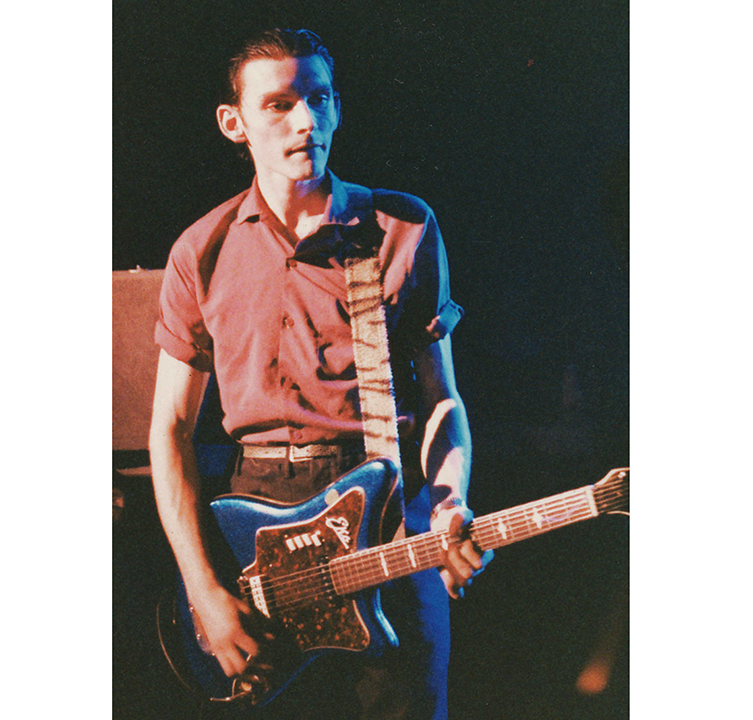
GG: There was one thing I wanted to ask, that is a complete tangent to our conversation and should maybe have been mentioned earlier by me! I hope you don’t mind if I talk to you about your guitars! I did notice on stage you have a really gorgeous green Telecaster! Because we are guitarguitar, it’s nice to get a little bit of that chat in!
BP: I expected it, actually!
GG: Hahaha! We just had so many interesting things to talk about! We can come back round to the guitars now! If that’s ok?
BP: Yeah, absolutely.
GG: So, is that great Tele of yours a Custom Shop Thinline?
BP: It is, yeah. It’s only a few years old. I saw it online and I was just attracted to the colour (laughs)
GG: It’s gorgeous! Even working in guitarguitar, we’re Custom Shop dealers, but I’ve never seen anything like that before! Was it a limited run?
BP: Yeah, it must have been! Because I looked to see if there were any other versions of it around and what kind of prices they were commanding, and I think I found one of the same colour. So yeah, very limited. My mate actually who lives down the road, Robin Guthrie (from the incredible Cocteau Twins), he lives just down the road from me here in France.
GG: Wow! What a beautiful sounding band! It’s amazing: it’s like what we were just talking about, with cities and so on. They’re originally from Grangemouth (industrial town about 30 miles away from Glasgow) and that place looks like the start of Blade Runner! (Brendan laughs) It’s like a huge Harkonnen oil refinery, and this magical, gorgeous music came from there. How on Earth did that come out of such a place?
BP: I know! It’s funny, isn’t it? He (Robin) actually used to work for BP in Grangemouth: he used to work on the computers! He’s a real computer whizz. Anyway, he came up to me and went ‘Wow!’ when he saw the Telecaster (laughs), I mean, Robin’s got so many fucking guitars!
I’d always wanted a thinline because I’ve always liked that semi acoustic kind of vibe. I had a couple of other Teles but they don’t have that same resonance. The kind of sound I was going for was something which is more like Country. I use a kind of picking style as well. So, it just made it far more versatile for me.
GG: The semi-acoustic nature of the thinline over a solid body, yeah?
BP: yeah, yeah. It’s just something that lends itself more to electro-acoustic qualities.
GG: Interesting! Do you have any preference, for all the geeks like me, for string gauge? Is it 9s?
BP: Emm, yes. 9s.
GG: And what about plectrums? I think they made a bigger difference than most players realise!
BP: I like these big red ones because I go from guitar playing across to bouzoukis and things, so a normal guitar pick just doesn’t do the job. There’s a lot of tremolo work (as in tremolo picking, not whammy bar. Ray) on a bouzouki, so I use these big orange things. Where are they? (sounds of Brendan rummaging around) Ah, here’s one, a fresh one. It’s got a tortoise on it, it’s a Dunlop.
GG: Ah, a Dunlop Tortex!
BP: Yeah, is it a .50mm? Yeah, it’s a .50mm.
GG: So is it more kind of red than orange?
BP: Yes, more red and it’s like a triangle.
GG: Ah yes, I know exactly the one! That’s interesting! Ok, cool! And have you got any pedals at your feet, for a typical Dead Can Dance gig?
BP: I’ve got a lot of pedals. (laughs) My basic set up is, I use two stereo combos. I loop in my pedalboard through a Kemper profiler and I also use a BOSS ES-8, you know the switching system?
GG: Yes, I know the one.
BP: And it’s all MIDI-linked, so I can change all the effects and everything, just stepping through the switching system, through the songs, basically. I do it all at my feet, and the Kemper responds to that. As for the pedals, I have the Waza Craft Vibrato.
GG: Oh yeah! The (Boss) Waza Craft stuff’s amazing.
BP: Yeah. I have it on really subtle, really low. I prefer Vibrato to Chorus and it gives such a subtle movement, you know? Modulation to the string? So, I pretty much have that on all the time. And then I also use an Electro-Harmonix Super Ego. I use it almost more like an audio exciter, it’s a very subtle doubling which widens the sound a little bit.
GG: Got you.
BP: Then I have an Eventide H-9 for all of my modulated effects and then that goes through a Strymon Big Sky for all the reverbs.
GG: That’s a good set up! You don’t tend to go for the more distorted or fuzzy tones, do you?
BP: No, I mean, I use them in a couple of songs, and I’m got an Electro-Harmonix Deluxe Big Muff, which kind of covers all of the kind of distorted, fuzz sounds. To be honest, I prefer fuzz to distortion anyway.
GG: Yeah, you can sort of manipulate your fingers and get different results out of fuzz effects, can’t you?
BP: Yeh, yeah, it’s more forgiving, I think.
GG: Haha, true enough! On the subject of guitars, I came to one of your solo shows a few years ago and it was a Gibson SG you were using. Is that another guitar you’re fond of?
BP: Yeah, it’s a ‘64 SG. I shouldn’t (laughs) really be taking that on the road with me because it’s worth an absolute fortune!
GG: Yeah, totally.
BP: It’s a beautiful guitar. Once again, it’s suitable for certain things. What I like about it is that it has a wide neck on it, which is more like a regular acoustic classical guitar, so it’s great for fingerpicking. I’ve got a couple of SG’s: I’ve got a ’71 Standard.
GG: But they’re not necessarily the kind of guitars you want for a Dead Can Dance tour?
BP: Well, it just depends on the songs we’re doing. To be honest, I just love the Teles. There was a phase I went through where I played lots of guitars... Jazzmasters, I like the clean-ness of them. I just find that the Fender Tele is just so much more versatile. You can do lead, you can do rhythm, it’s great! But I prefer the Tele’s too, the kind of hybrid, where you’ve got a humbucker too.
GG: Yes.
BP: And your regular single-coil as well, and switch between them. I don’t like...I find them overly bright with just the single coils.
GG: Yeah, totally.
BP: Unless it’s a Strat. I’ve got a really nice White Stratocaster but then the way the pickups are with that, you can get a nice warm, jangly sound anyway. I like my jangle! Hahaha!
GG: Haha, yeah! Definitely. And I guess for the guitars, finally, I suppose, the music that you’ve put out, there is a lot of acoustic guitar, too. What do you prefer for acoustic guitars?
BP: Well, I had an old Guild 12-string from the early 70s. I use a Godin nylon, electric-classical, which is fantastic, I really love the sound of that. And I’ve got a Taylor 6 string.
GG: And do you write on the nylon string as well, or is that more for when you need that sound?
BP: Yeah, I did a tour earlier this year actually with just a trio, before the Dead Can Dance tour. I played a lot of clubs around Europe, and I was doing kind of Afro-Brazilian music.
GG: Oh wow!
BP: So, they obviously use a lot of classical guitar, a lot of Baden Powell (de Aquino, the Brazilian guitarist, not the Boy Scout founder...) numbers. It’s a completely different style once again. But yeah, the Godin’s great. I mean, through that Fender Acoustic Pro combo, it just sounds great.
GG: Nice! Are you planning to do more of those kinds of shows between now and the American Dead Can Dance tour?
BP: Just finishing this album, I’ll be happy to finish that be the time the tour comes around! (laughs) And then I’ll release this album I’m working on in the autumn and try to tie in a tour with that. I’d like to tour the album and that obviously means getting some people who play Greek music!
GG: Yes!
BP: And using those instruments, so there’ll be no electric guitars!
GG: Of course, you have to treat the music properly, right?
BP: Yeah, yeah. To a degree. I’ll probably put a keyboard player in there to cover all the rest of the bases and keep the numbers down!
GG: Always! Absolutely! I suppose one of the last questions I thought would be interesting to ask was that after Dionysus was released, and the tour that you’ve just finished was a wonderful big career retrospective, we did in fact get one of the Dionysus pieces performed on the tour. What I was thinking, have you ever considered, maybe not even with Dead Can Dance, but having Dionysus played live in its entirety with like dancers, musicians and a chorus? And making it separate, like maybe a few special performances? Is that something that might come up in the future?
BP: It would be great! That would be great! It would be a lot of work! (laughs) It would need to be more than one or two shows. But I think something like that would probably have to be subsidised (laughs)! An arts group or someone. That’s the downside, when you make a concept album like that: it’s the sheer numbers. The practicality of performing that live...it’s kind of off-putting, let’s put it that way.
GG: Yeah.
BP: I suppose that’s the beauty of working on studio albums, because there is no limit!
GG: With technology and your imagination, you can have any sound you want!
BP: Yeah, but therein lies the problems. It’s the difference between, say, the music I make, and like-minded composers, and a regular Rock band. Stick to the same instrument and boom! When happens in the studio is pretty much what happens on stage, you know?
GG: Totally. Maybe you should get in touch with the Cirque du Soleil and tell them to do a Dionysus show? That sounds like an idea.
BP: Hahaha! That would be great, yeah!
GG: Haha! Cool! Well, Brendan, you’ve been so generous with your time! I’ve exhausted all of my 3 pages of ridiculous questions and you’ve been very patient with me so thank you very much.
BP: You’re welcome!
With that, the formal part of the onterview was over. We spoke a little further, I thanked him and we said goodbye.
Looking back on the conversation Brendan and I shared, I was amazed at the width and direction it took. With his level of knowledge and experience, it came as no surprise that he would have such deep, informed points of view, but what was truly enlightening was his happiness to share. Truly, it's not every day that one conversation can travel from Dionysus cults, through to the benefits of Mainstage, with sojourns to the Spanish Inquisition and tips on making home-made drums! I've learned that talking to Brendan is as adventurous, exotic and exciting an experience as listening to Dead Can Dance's music.
After we finished our call, I immediately began to think of other questions I was curious about, especially since Brendan had been so candid. In the end, it still stands as probably the biggest and most in-depth interview I've ever conducted, and the wealth of gold and jewels within more than justify the length. I hope lots of Dead Can Dance fans gain a special insight into Brendan's working practices, and that music fans who've yet to explore the band are suitably intrigued: it's an adventure you'll never forget!
Brendan is currently at work on his 3rd solo album. Dead Can Dance tour the Americas next year. Tickets and dates are available from the official Dead Can Dance website. I would like to thank Brendan for giving us this incredible interview.
Thanks for reading guys,
Until next time.



